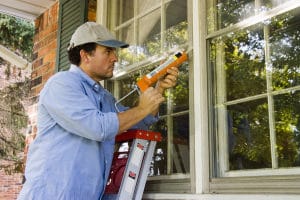 Home energy usage is a big concern when the cold weather starts coming in. The best way to improve your energy efficiency (and, therefore, your monthly energy bill) is to do an audit. Some people pay for audits, but it can be done yourself. Even if it’s not perfect, it will do wonders for helping you determine exactly what areas your home could use improving upon to save you money (not to mention help reduce your carbon footprint).
Home energy usage is a big concern when the cold weather starts coming in. The best way to improve your energy efficiency (and, therefore, your monthly energy bill) is to do an audit. Some people pay for audits, but it can be done yourself. Even if it’s not perfect, it will do wonders for helping you determine exactly what areas your home could use improving upon to save you money (not to mention help reduce your carbon footprint). Heating & Cooling
Take a close look at your heating and cooling equipment before you have to use them. It’s a good idea to inspect such devices once per year at the least. If your furnace is the forced-air type, it’s important to take a look at your filters. If they are looking questionable, you had better replace them.It is generally recommended that filters be replaced once per month or once every two months, especially if you are using the furnace quite a bit (such as during the winter months). Make sure the equipment gets a cleaning at least once per year as well.
Should I replace my furnace?
Some energy conscious homeowners are interested in updating their furnaces because it may improve their energy efficiency drastically. If your furnace is more than 15 years old, then it is definitely a good idea to purchase a newer model instead. They are far more energy efficient, and it is at this point that the energy savings really make it worth it.Even if your furnace isn’t quite that old but is in poor condition (dirt streaks on the ducts, for example), it may still be worth replacing the furnace with a new, clean, energy efficient model.
Locating air leaks
If you have air leaks or drafts in your home, this may be an indication of lost energy and, therefore, lost savings in your energy bill. Reducing drafts can make a huge impact. For some people, it is as much as 20% savings per year -- not to mention the additional impact of added comfort in the home!If you already know where some of the bigger drafts are located, write them down. Those are the obvious ones, but that may not be all of them. Take a walk around your home to identify the subtler ones: check baseboard gaps, flooring edges, and the places where walls and ceilings come together. Check on the outside too, as outer materials could be to blame (especially in spots where two different types of materials are used together). Also audit your windows, doors, fixtures for plumbing and lighting, electrical outlets, and fireplace dampers.
Once you have identified them, be sure to seal them up. Use caulk for holes near electrical outlets, faucets, pipes, and wiring. If you see cracks in other materials (such as foundation, mortar, or siding), use the proper material and tools to seal that up too.
Subscribe to Energy Home Pros's Blog

Comments